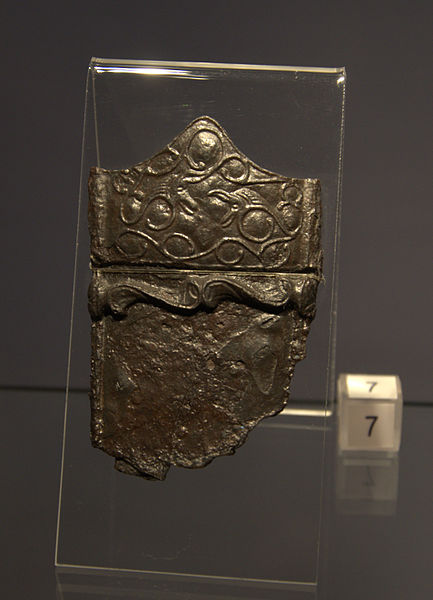The European dragon is a legendary creature in folklore and mythology among the overlapping
cultures of Europe.
Illustration of a winged dragon by Friedrich Justin Bertuch, 1806.
Mosaic of the third century BC from Kaulonia, southern Italy.
Celtic sword heath showing dragon 50 AD
Dragonesque brooch, AD 75 – 175
The Dacian draco was a military standard used by troops of the ancient Dacian people, which can be seen in the hands of the soldiers of Decebalus in several scenes depicted on Trajan's Column in Rome, Italy. This wind instrument has the form of a dragon with open wolf-like jaws containing several metal tongues. The hollow dragon's head was mounted on a pole with a fabric tube affixed at the rear. In use, the draco was held up into the wind, or above the head of a horseman, where it filled with air and gave the impression it was alive while making a shrill sound as the wind passed through its strips of material. The Dacian draco likely influenced the development of the similar Roman draco.
Dacian draco on from Trajan's Column
Dacian Draco on Trajan's Column
The Dacians bearing the draco on Trajan's Column
The so-called Dacian Riders-God bears a draco (c. 2nd century AD, Bucharest Antiquities Museum).








